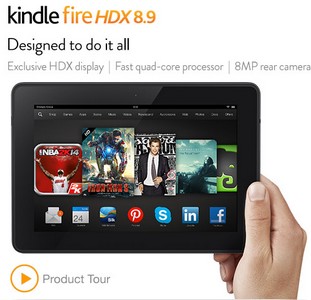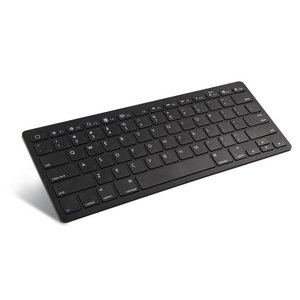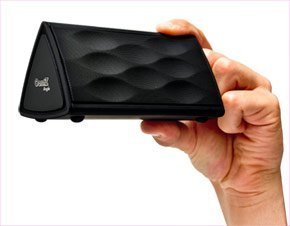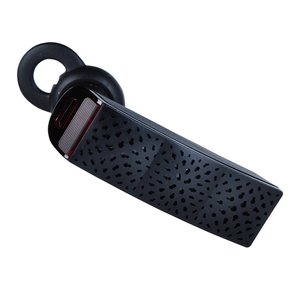
Bluetooth speakers, 4G tablets and external hard drives with Wi-Fi, oh my! Here’s how these three types of connectivity technologies differ.
Wi-Fi
Wi-Fi is the type of connection you need to wirelessly connect various devices to a wireless network. It could be your home network, the network at your workplace, or the biggest global network of them all: the internet.
Yes, the internet is a network. It seems obvious when you realize that a network is just a collection of technology devices that are all set up to communicate with one another. So where at home, you use a network to send a document to a printer that’s located far from your computer, on the internet, computers and servers send web pages, files and messages to other computers and servers that are located as far away as the other side of the world.
So if you’re considering buying some device, and you want it to be able to communicate with other devices on your home or office Wi-Fi network, or be able to make use of the internet connection provided by either of those networks, you want to be sure the device has Wi-Fi capability built in. Wi-Fi is also the technology that’s used to connect to the internet from public, Wi-Fi hotspots (like the ones in Starbucks and McDonald’s).
“Private” Wi-Fi Networks
Some wireless accessories, like the Kingston Wi-Drive, are designed to create their own, “private” Wi-Fi connection without relying on pre-existing, available Wi-Fi networks. They create their own, mini Wi-Fi network that only includes the accessory and whatever device(s) are accessing data from the accessory. For example, you could be hiking around the lip of the Grand Canyon, with no cell or Wi-Fi networks available, and still be able to use a Kingston Wi-Drive to access whatever’s stored on the drive from your tablet or smart phone.
The connection is a Wi-Fi connection, but it’s a “private” connection that’s only accessible to those two devices, and only for purposes of transferring or streaming whatever’s on the Wi-Drive to your tablet or smart phone. Just think of it as the same kind of connection you’d get with a USB cable, but without the USB cable. There are no service charges for using these types of devices. Wi-Fi drives are generally designed to allow for connection of multiple devices, but those devices can still only access what’s on the drive.
Note that this is NOT the same thing as when you get a “personal hotspot” device from your cell / Wi-Fi service provider. That type of device uses your provider’s connection network and does provide internet access, but it comes with a monthly or annual fee attached.

3G/4G/Cell Connectivity
You probably already know cell connectivity means connection to a cell service network, but you may be confused by the “3G” and “4G” designations, or by the fact that some people are using their smart cell phones to connect to the internet, too. Didn’t I just finish saying that’s supposed to be a Wi-Fi connection? And what about text messages; isn’t that sort of like email, so shouldn’t that also be a Wi-Fi thing?
Here’s the deal: “3G” and “4G” are just designations for different generations and speed levels of cell networks. It’s sort of like how the Windows operating system has gone from 3.0 – 8.0: the higher the number, the more recent the release. With respect to cell networks specifically, the higher the number, the faster and stronger the connection speed. We may be seeing a “5G” and “6G” designation at some point in the future.
Text messages can be sent over a cell connection because a cell network is very much like any other kind of network, and cell phones transmit their data digitally. Whether you’re speaking into your phone, sending a text message or sending a picture message or video message, your cell phone and service provider’s network are breaking the content down into bits, sending it across the network to the recipient, and re-constructing it on the receiving end.
However, cell service networks were originally designed only to transmit voice calls, which don’t break down into large amounts of data during the transfer process. Text messaging came soon after cell service became a common thing because text messages are also very small, in terms of file size/data. Eventually, cell phone users also wanted the ability to send photos and videos, so that functionality has been added, but you can only send very short videos and small photos with your cell phone because the network isn’t set up to move large data files around. For that, you need a Wi-Fi connection.

Devices With Both Wi-Fi AND Cell Connectivity
Pretty much all smart phones, and some tablets, now come with both Wi-Fi and cell connectivity. This is so that the user can have access to the internet whether there’s an available Wi-Fi network in the area or not.
Most cell service providers have not only their own cell service networks, but their own Wi-Fi networks as well. Note that the two networks are totally separate, though they may cover the same service areas. Where a given cell service provider doesn’t have its own Wi-Fi network as well, that provider will have an agreement or contract with a Wi-Fi network provider to bring Wi-Fi connectivity to the cell service provider’s customers.
If Wi-Fi’s available, great, the device can connect directly to the internet via Wi-Fi. If not, the device uses its cell connectivity to connect to the cell service provider’s cell network, and from there, connect to the cell service provider’s Wi-Fi network. This type of connection uses up data plan allowance minutes, because you’re using your cell service provider’s cell network to access the provider’s Wi-Fi network, and data is being transferred back and forth across that connection to your device. Wi-Fi connections don’t carry any data allowance charges: once you’re connected, you can transfer as much data as you want, and that includes streaming videos and music, without incurring additional fees.
So if you want to save data plan minutes, NEVER access the internet via your cell service network: stick to Wi-Fi only whenever possible. Most smart phones and tablets that have both cell and Wi-Fi connectivity are set up to use the cell connection first if one’s available, and switch to Wi-Fi as a backup in cases where cell service isn’t available. This shouldn’t be surprising, since your cell service provider wants to make as much money off its customers as possible; the provider won’t be making any data allowance money on its cell service customers who connect using Wi-Fi only.

How To Ensure You’re Connecting Via Wi-Fi, To Avoid Data Allowance Charges
This section only applies to two situations: when you want to use a public Wi-Fi hotspot, or you want to use a Wi-Fi network you already have access to (e.g., your home network, your office network, the network of a family member you’re visiting) and therefore don’t need to use your cell service to connect to Wi-Fi. Anywhere else, you’re pretty much stuck with accessing your cell provider’s Wi-Fi network through your cell service, and it’s gonna cost you.
You can change your smart phone or tablet default settings to avoid unwanted cell service/data allowance charges, but it can be inconvenient since you have to remember to turn your cell service back on when you’re done using the Wi-Fi. On a tablet, you may find it’s best to leave cell connectivity turned off by default and only turn it back on when there’s no other connectivity option available.
To turn off your device’s cell service connection, go into your Settings menu and look for the links for “Wireless”, “Network(s)”, and/or “Wi-Fi”. Every device is different so I can’t provide specific, step-by-step directions that would work for every possible device here, but the process is basically the same for all of them. When you want to turn off your cell connection, you’ll need to go into one of those three menus to do it.
In one of those three menus, there will be a list of all available connections. Find the one for your cell provider network and tap the “disconnect”, “stop”, “off” or similar link/button to temporarily turn off / disconnect the cell service.
Note that you do NOT want to tap the “Airplane Mode” link, because that will turn off ALL types of connectivity for your device and you need to be sure your Wi-Fi connection is still available.
After turning off the cell network connection, go into your device’s Wi-Fi settings to ensure your Wi-Fi connection is still available. Your device may be set up to automatically turn off Wi-Fi whenever cell service is disconnected—another tactic to “encourage” users to connect to Wi-Fi through the cell service connection only. In that case, you may have to turn it back on before you can view available Wi-Fi networks.

Bluetooth
Bluetooth connectivity is only used for wirelessly connecting devices to each other, or to a pre-existing wireless network through a special Bluetooth-enabled device called a “router”. Bluetooth connections can’t be used to make cell phone calls, send text messages or transfer large files (like for streaming video), they’re really only meant to carry a signal from one device to another without any wires involved.
Most consumers only use Bluetooth to wirelessly connect their mobile devices to things like headsets, printers, keyboards, mice and speakers. When you have a Bluetooth headset connected to your cell phone and you make or receive a call, it’s still your phone that’s handling the call connection. All your headset’s doing is receiving a signal from your phone and broadcasting it to you through the headset, just like the way a radio receives a signal from the station you’re listening to and broadcasts that signal to you through a speaker.
Bluetooth is only used to transmit signals over short distances, and it has nothing to do with your Wi-Fi network or cell service. You don’t even have to have a Wi-Fi or cell network available at all to connect Bluetooth devices, it’s a totally separate and different type of technology than those other two. Other than the cost of the Bluetooth device itself there are no charges for using Bluetooth, and using Bluetooth will not slow down your Wi-Fi network traffic (so if someone’s streaming music or video, your Bluetooth connection will have zero impact on that).
How Does All Of This Apply To Your Life?
Now that you understand the different types of connections, you can be a smarter shopper when it comes to new devices and wireless accessories.
If that wireless keyboard or external speaker you’re considering for your tablet is a Bluetooth device, now you know that: 1) your tablet needs to have Bluetooth connectivity in order for this to work, and 2) using the keyboard or speaker won’t have any impact on your data allowance or Wi-Fi network traffic.
If your tablet has both cell and Wi-Fi connectivity, now you know how and why to switch between the two connectivity types.